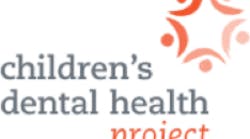The report states that the state program has been in existence since 2003 and that the state has regulatory authority to approve dental hygienists as providers in schools under an arrangement called “public health supervision” governed by a memorandum of agreement (MOA).(4) In reality, the statute in South Carolina was changed in 2000 to allow students direct access to dental hygiene preventive services that include prophylaxis, the application of dental sealants and fluoride, and referral for any care that falls outside the scope of dental hygiene. In 2003, in an unsuccessful attempt to avoid restraint of trade charges by the Federal Trade Commission, the acting dental director worked with the South Carolina Dental Association and the South Carolina Dental Board to insert a barrier requiring an exam “only” in a school or nursing home setting, if a dental hygienist does not have an MOA with the Department of Health and Environmental Control.
Above photos, including image of Christian Burchell (at left), courtesy of Health Promotion Specialsts
Tammi has held numerous officer and council positions with the American Dental Hygienists' Association (ADHA), including president of the ADHA. Tammi has received the ADHA Distinguished Service Award, the South Carolina Dental Hygienist of the Year (twice), and the South Carolina American Association of University Women/Women of Distinction Award.
In Wisconsin, state policies allow dental hygienists to practice in public health settings, including schools, under a dentist’s general supervision and to place sealants without the requirement that a dentist first examine the child. Medicaid can be billed directly for both sealants and an oral health assessment provided in schools.(4)
RELATED | Foundation of caries management remains unchanged
There are recommendations in the report. The authors say that the 20‐year‐old guidelines for sealant use in community programs must be updated. The revised guidelines should then be promoted by federal, state, and local officials who manage sealant programs. An expert SSP Design and Operations Work Group should be convened to revise the guidelines. Barriers should also be addressed in the revision.
Could one of the barriers be state dental practice acts which prohibit dental hygienists from providing care directly to the public? Prevention is a powerful tool, and dental hygienists are prevention specialists.











